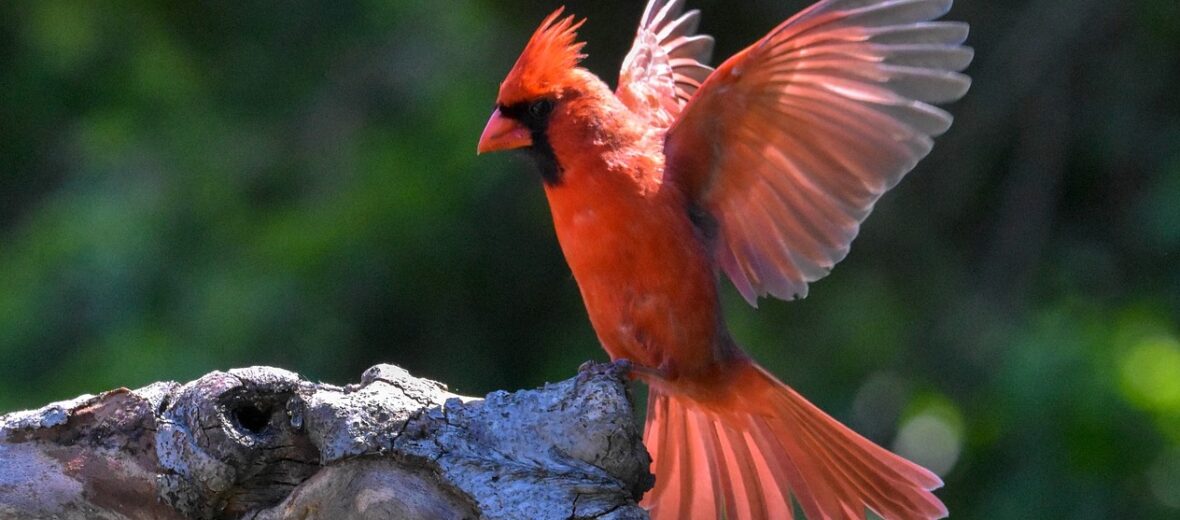
Named the official bird of 7 U.S. states it’s the northern cardinal. You can even see this bird in the game Angry Birds. This non-migratory bird is a favorite of backyard bird watchers not only because of it’s pretty song, but because of the male’s beautiful red plumage. A cool thing about these birds is that both the males and females sing. Typically, when the female sings though, it’s from their nest and it’s because she needs more food. Hey, baby’s gotta eat. Speaking of eating: these feathered friends are usually the first to visit bird feeders in the morning and the last ones to leave in the evening. These critters are listed as Least Concern by the IUCN.
First the Stats…
Scientific name: Cardinalis cardinalis
Weight: Up to 1.5 ounces
Length: Up to 9.3 inches
Wingspan: Up to 12.2 inches
Lifespan: Up to 15 years
Now on to the Facts!
1.) Northern cardinals are granivores (eat primarily seeds). Their beaks have specifically evolved to crack open the hulls on seeds and shells on nuts.
2.) The 7 states that boast the northern cardinal as their state bird are: Illinois, Indiana, Kentucky, North Carolina, Ohio, Virginia, and West Virginia.
3.) Their name dates back to the time of the U.S. founding colonists, coming from the similarity of the males’ red feathers to the red biretta and vestments of Catholic cardinals.
4.) On occasions, the bright red plumage is replaced by golden yellow or orange. This is called xanthochroism.
5.) The cardinal’s call sounds as though they’re saying “birdie, birdie, birdie” or “cheer, cheer, cheer.” – I’ll bet you could hear them singing when you read that.
But wait, there’s more on the northern cardinal!
6.) They represent the Arizona Cardinals NFL team and the St. Louis Cardinals MLB team.
7.) Like Canadian geese, it isn’t uncommon for them to violently and relentlessly “wage war” with their own image for hours in mirrors, windows, or anything that displays their reflection.
Did you know…?
The Northern Cardinal has also been introduced in Southern California and Hawaii. However, the small population in California is in danger of disappearing due to habitat loss.
8.) Northern cardinals are monogamous (mate for life).
9.) Virginia Nightingale or Winter Redbird are 2 other aliases of the northern cardinal.
10.) Cardinals molt at least once a year to replace damaged feathers. During this time they look terrible. But this appearance is short-lived.
But wait, there’s still more on the northern cardinal!
11.) During courtship, the males will feed their females seeds in a method known as “beak to beak”.
12.) Once the eggs have hatched, the male and female will take care of feeding their nestlings.
Now a Short Northern Cardinal Video!
Also, check out the Critter Science YouTube channel. Videos added frequently!
Want to suggest a critter for me to write about? Let me know here.



